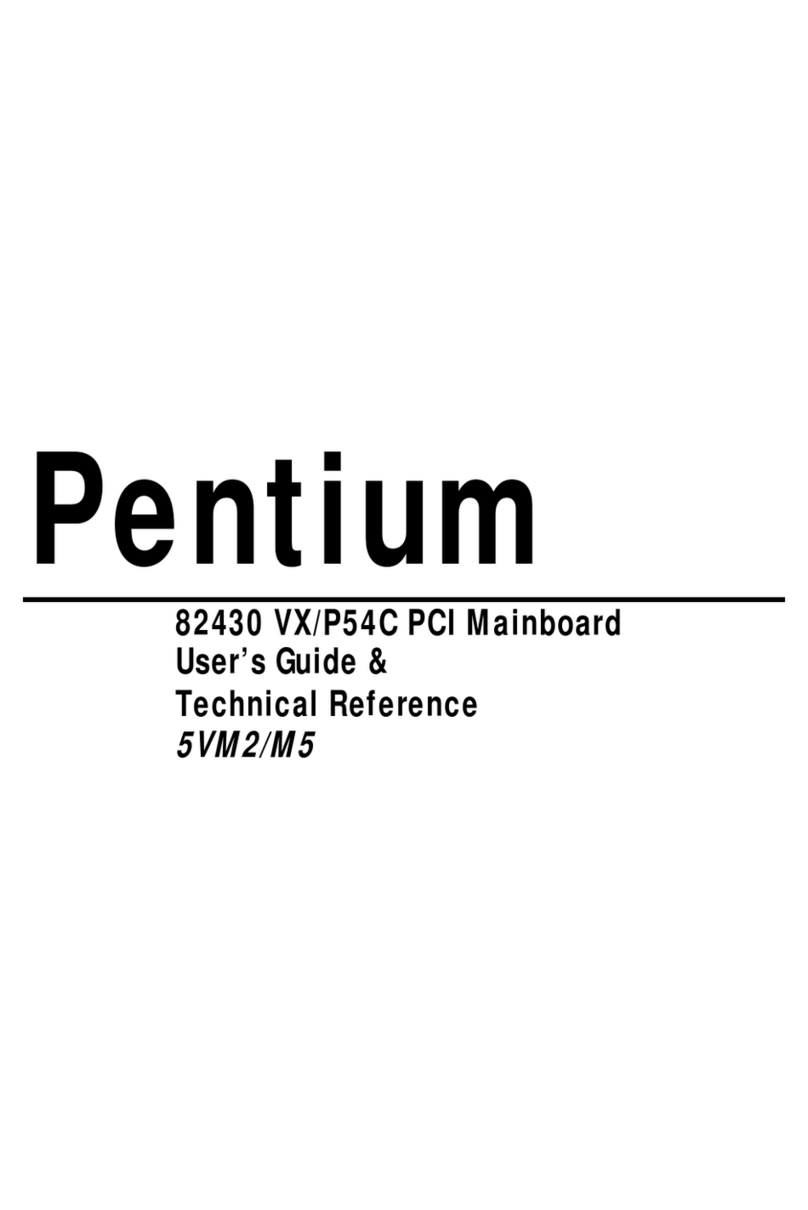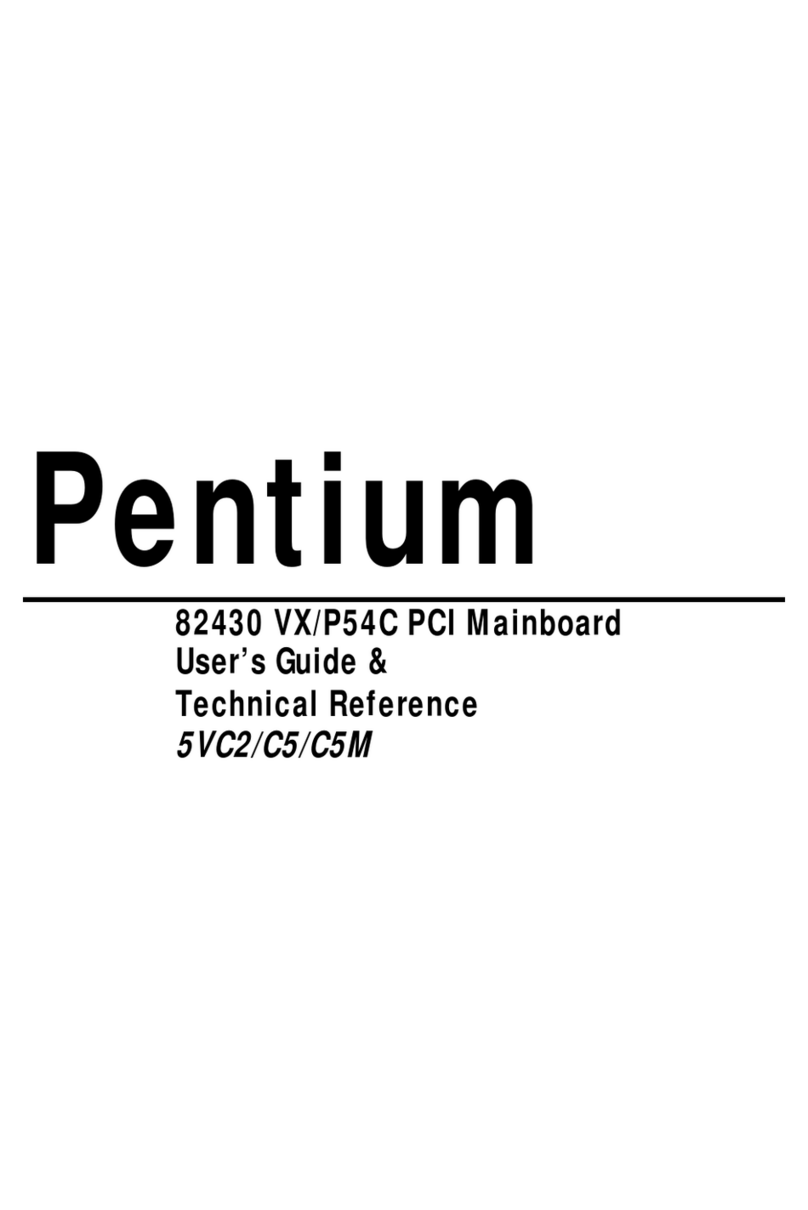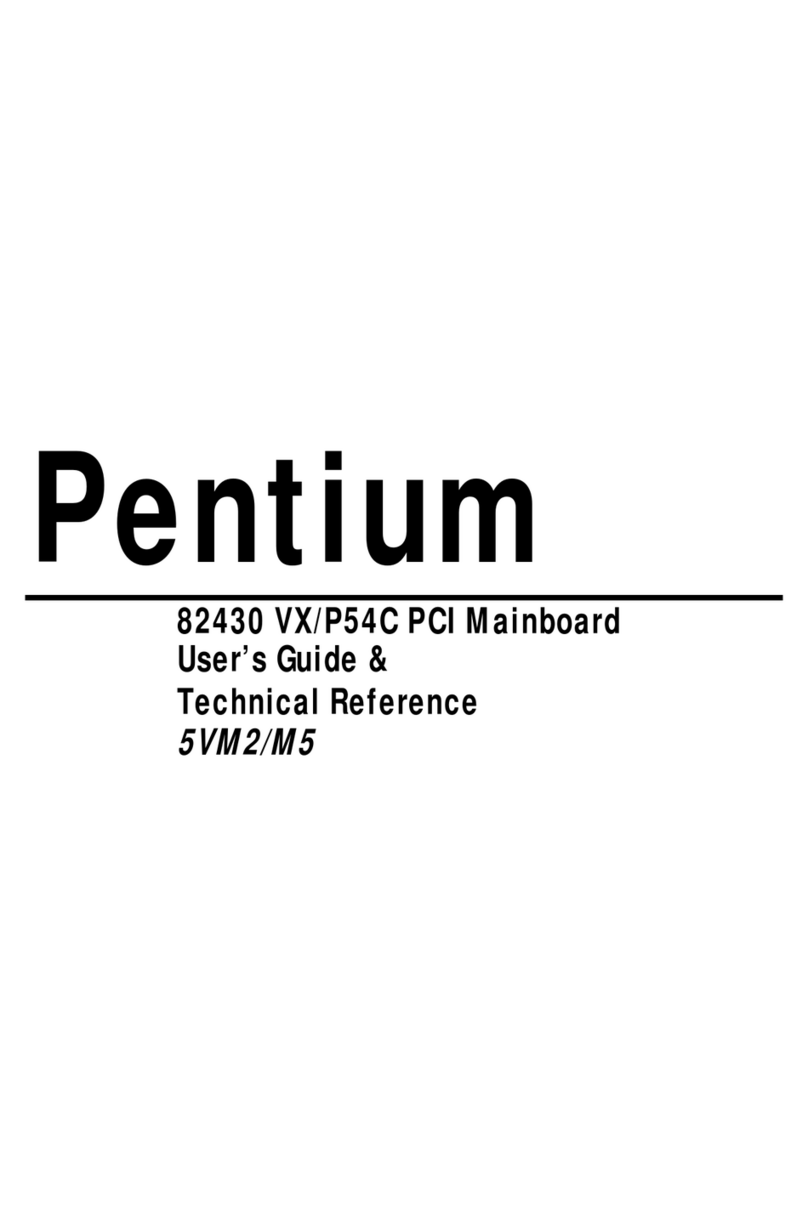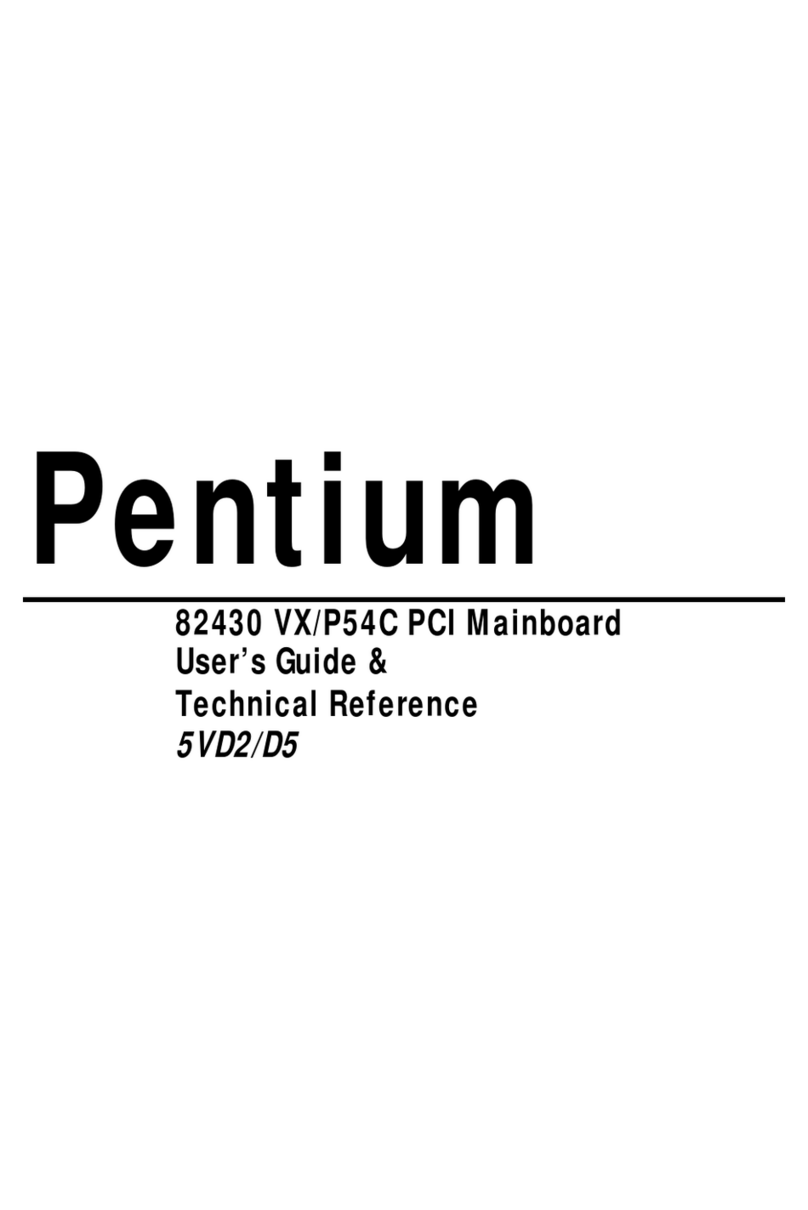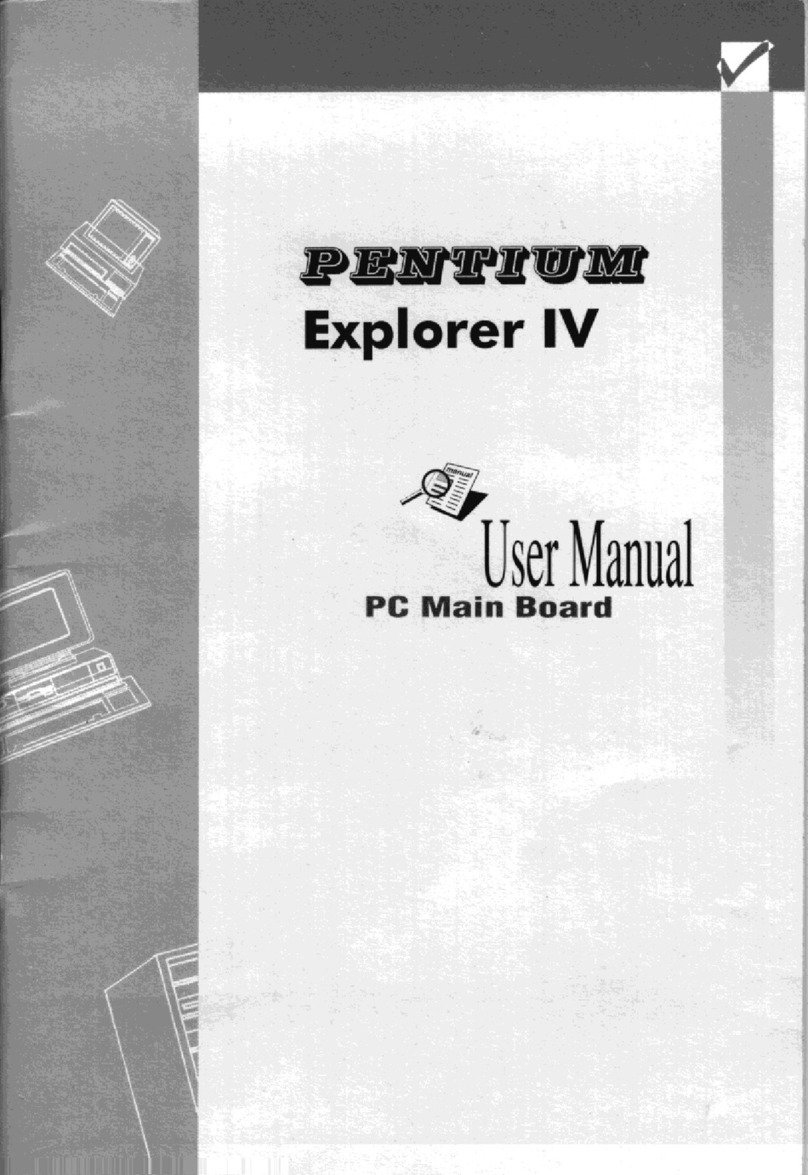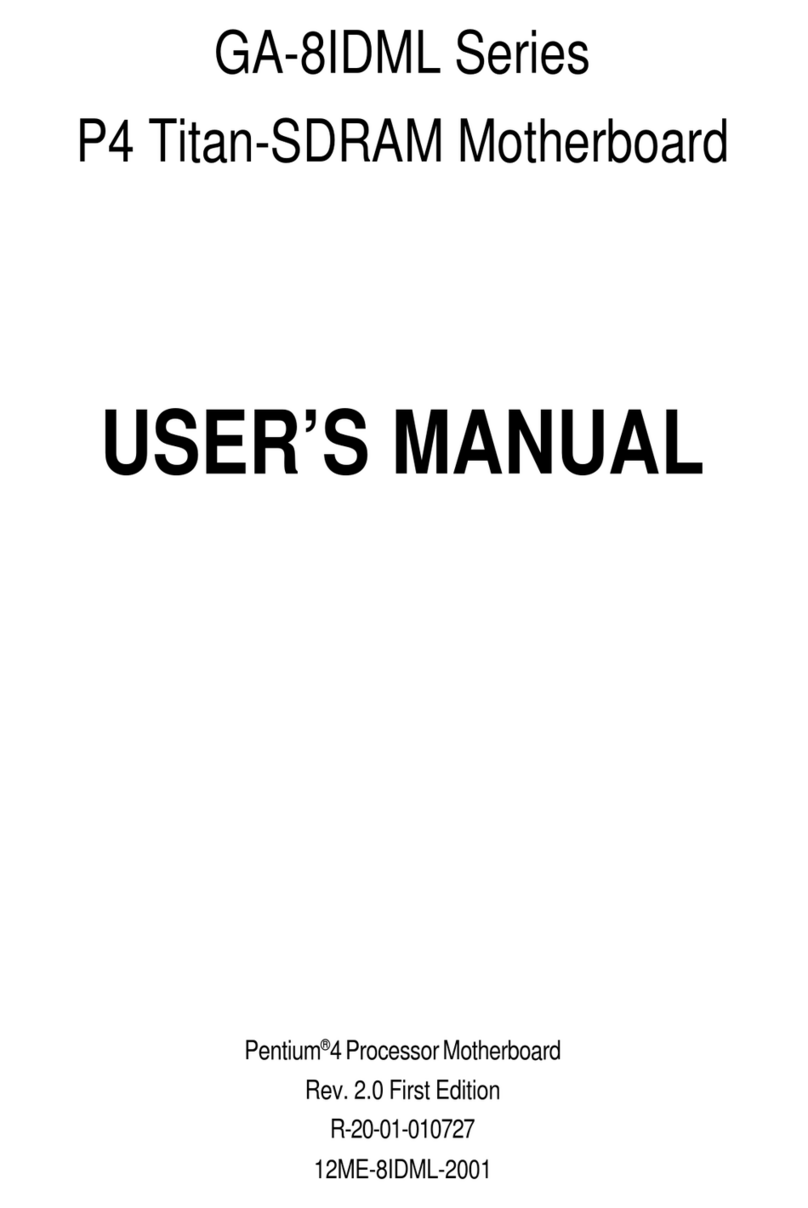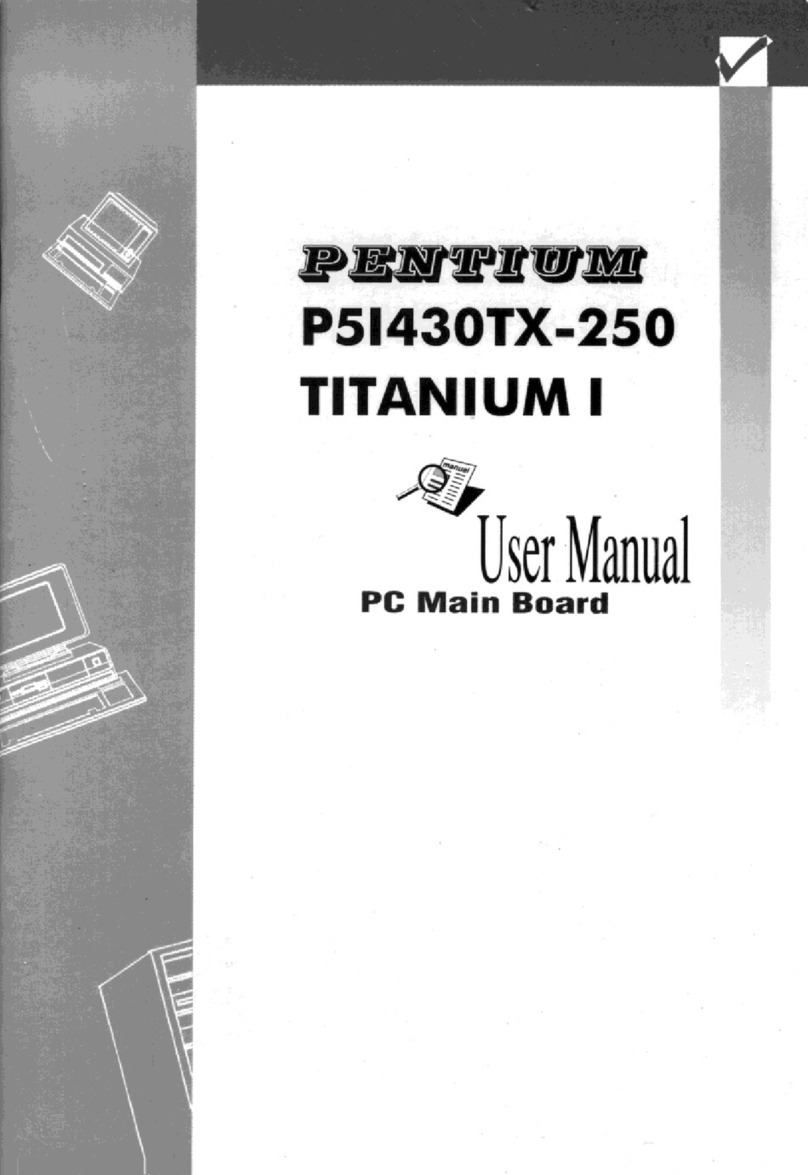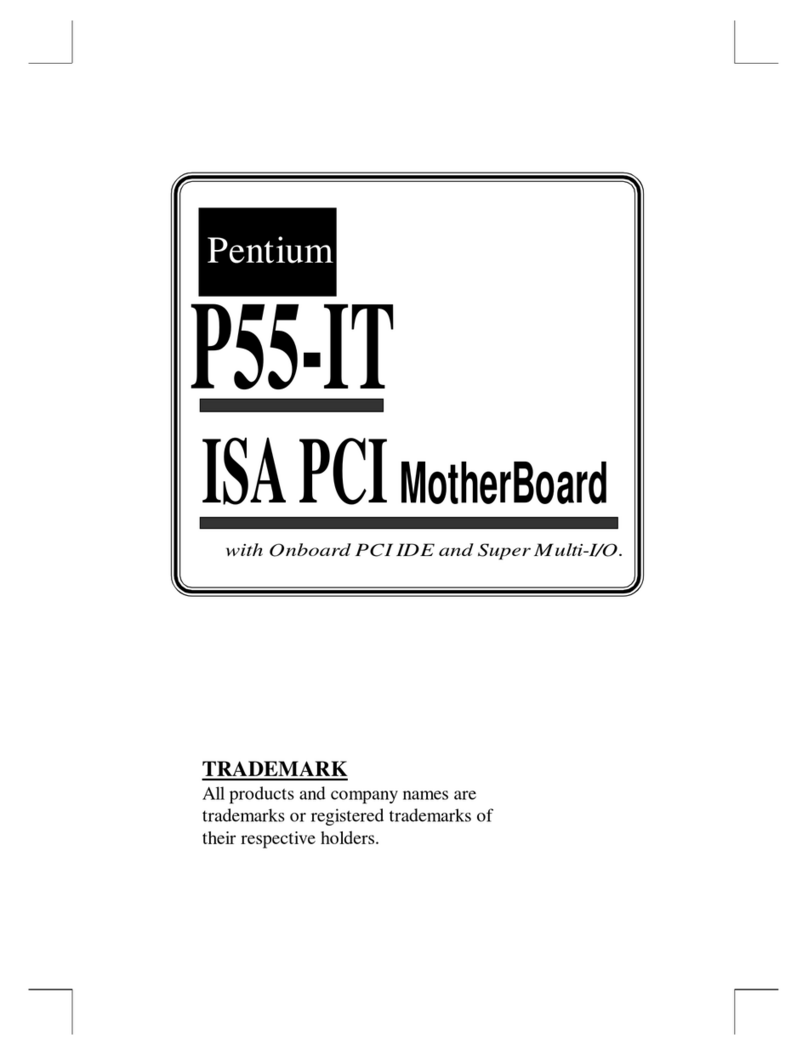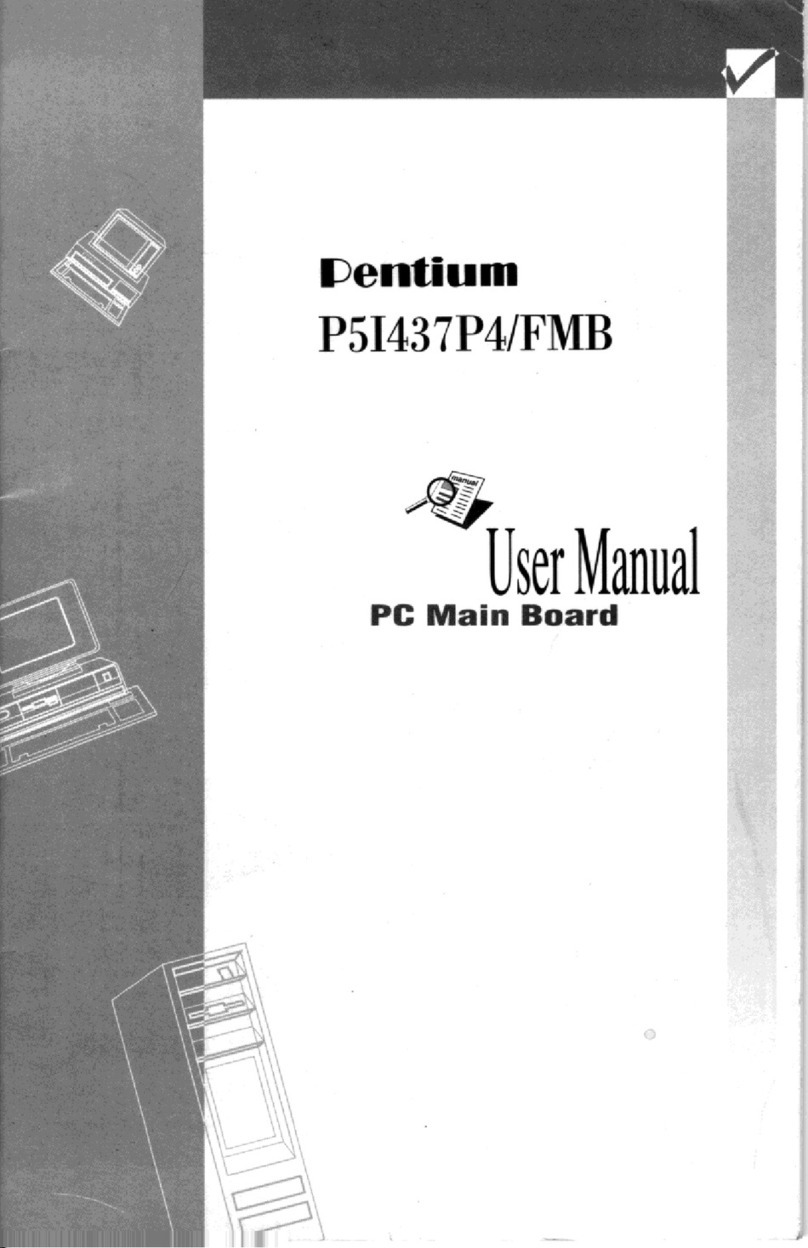SQ578
2Key Features
2.1 Product Specification
²Processor: Supports 75-300MHz Pentium family: Intel P54C, Pentium Processors
with MMX Technology (P55C), AMD-K5, AMD-K6 Cyrix 6X86, 6X86L, 6X86MX
and IDT-C6 Processors. The ZIF Socket 7 will support future Pentium Overdrives.
²L2 Cache: Onboard 256KB or 512KB Pipeline Burst SRAM
²SIMM (System Memory): Supports 70ns or faster Extended Data Output (EDO) or
Fast Page (FP) SIMM in four 72-pin SIMM sockets using 4MB, 8MB, 16MB, 32MB
or 64MB for a maximum of 256MB system memory.
²DIMM (System Memory):Supports 66MHz or faster unbuffer 2 or 4 clock 3.3V
DIMM in two 168-pin DIMM sockets using 8, 16, 32, 64 or 128 for a maximum of
256MB system memory.
²Chipset: Features SiS 5598 Pentium Single chip Integrated VGA or SiS 5582
Pentium Single chip without VGA, with a Winbond 83877F/TF super I/O controller
chip.
²Super VGA(option): To provide a compact video and graphics solution for PC based
system, high performance 3-in-1 PCI true-color graphics accelerator with video
accelerate functions, supports DCI Drivers and Direct Draw 3D Drivers, video
overlay for any graphic modes. Real-Magic MPEG API compatible. Supports DDC1
And DDC2B specifications.
²Expansion Slots:Three 32-bit PCI and Four 16-bit ISA expansions slots.
²Super Multi-I/O:Two high-speed UART compatible serial ports and One parallel
port with ECP and EPP compatibility. One FDD header supporting either 5.25“ or 3.5”
(1.2 or 1.44/2.88MB) floppy drives. One IrDA TX/RX infrared port.
²Keyboard and PS/2 Mouse: Onboard Standard AT Keyboard and PS/2 Mouse Port
²PCI bus Master IDE Controller:Onboard dual-channel PCI Bus Master IDE
support 4 IDE devices. This controller supports PIO Mode 3 and Mode 4 with a data
transfer rate up to 17MB per second. An Ultra DMA 33 (UDMA) supports data
transfer rates up to 33 MB per second. Also supports LS120 Floppy Drive.
²Universal Serial Bus (USB):Two standard USB interface supports up to 48MHz and
127 peripheral devices.
²PCI BIOS:Win 95 Plug and Play with Green power saving support, APM 1.2 and
DMI Support.
²Mechanical: Baby AT form factor 220 mm x 270 mm.
